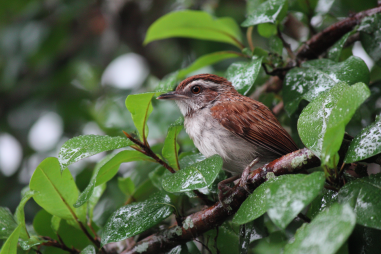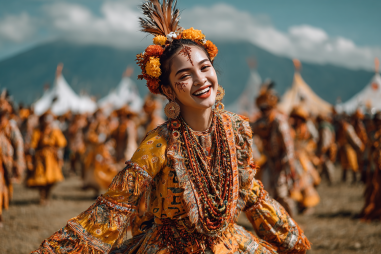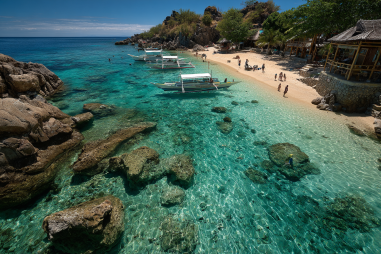Planning a trip to the Philippines can be a thrilling experience, but timing your visit is key to making the most of this beautiful archipelago. The Philippines is known for its stunning beaches, vibrant festivals, and warm hospitality, all influenced by its unique climate and seasonal variations. Knowing when to go can help you avoid rainy days, beat the crowds, and experience the local culture at its best. Let’s explore the best time to visit the Philippines by understanding its climate zones, seasonal weather patterns, popular events, and travel tips tailored to different preferences.
Overview of Philippine Climate Zones
The Philippines is an archipelago composed of more than 7,000 islands located in Southeast Asia. Its climate is generally tropical, which means it is warm and humid year-round, but it’s also influenced by monsoons, geographical features, and regional differences. Broadly, the country experiences two main climate zones:
- Tropical Rainforest Climate: Areas like Palawan and parts of Mindanao fall under this category, experiencing consistent rainfall throughout the year with no distinct dry season.
- Tropical Monsoon and Savanna Climate: This includes most of Luzon and the Visayas regions, featuring clear wet and dry seasons driven by monsoon winds.
Understanding these zones helps travelers decide when and where to visit, especially if you want to enjoy outdoor activities like beach outings, diving, or trekking.
Dry Season vs. Wet Season
The Philippines’ weather is primarily divided into two seasons: the dry season and the wet season, each bringing very different experiences for tourists.
Dry Season (November to April)
The dry season is generally considered the best time for travel, especially for beach lovers and outdoor enthusiasts. It coincides with the northeast monsoon, locally called “Amihan”, bringing cooler and relatively drier weather. This season is perfect for exploring beaches, islands, and natural parks without worrying about heavy rainfall interrupting your plans.
- Peak Dry Months: December to February are the coolest months, offering refreshing breezes and less humidity.
- Summertime: March and April begin to get warmer and sunnier, ideal for beach activities but be prepared for higher temperatures.
Wet Season (May to October)
The wet season is dominated by the southwest monsoon known as “Habagat”. This period brings frequent rain showers, thunderstorms, and sometimes typhoons, especially from July to September. Traveling during these months can be unpredictable, and outdoor activities might be limited due to the weather.
- Rainfall Peaks: August and September usually see the heaviest rains and have a higher risk of typhoons.
- Advantages: Despite the rain, this season offers lush green landscapes, fewer tourists, and lower prices.
Regional Weather Variations
The Philippines’ regional diversity means weather conditions can vary widely depending on where you are. For example:
- Palawan: Known as the “last frontier,” Palawan enjoys more consistent weather throughout the year, although the dry season is still preferable for island hopping.
- Mindanao: Experiences a different climate pattern and generally receives less rainfall, making it a good destination to visit even during the traditional wet season.
- Luzon: The largest island shows typical monsoon patterns—drier in the north during the dry season and wetter in lowland areas during the wet season.
It’s always a great idea to check regional forecasts when planning your itinerary, as typhoon paths and rainfall vary annually.
Best Months for Beach and Island Visits
If your goal is to bask in sun-drenched beaches and crystal-clear waters, the best months commonly fall during the dry season, between November and April. Some highlights include:
- Boracay: November to February offers ideal weather for beach parties, diving, and water sports.
- El Nido and Coron (Palawan): December to May, with calm seas and clear skies perfect for island hopping and snorkeling.
- Cebu and Siargao: While Cebu mostly follows the dry season pattern, Siargao is best visited from March to October for surfing, but prepare for occasional rains.
Planning beach vacations within this timeframe helps maximize your chances of sunshine-filled days and enjoyable sea activities.
Festivals and Events by Season
The timing of your visit can also enrich your cultural experience as the Philippines is home to numerous vibrant festivals celebrated year-round. Aligning your trip with these events can provide a unique glimpse into Filipino traditions and local life.
- Dry Season Festivals:
- Ati-Atihan Festival (January) – Kalibo, Aklan, features street dancing and vibrant costumes.
- Sinulog Festival (January) – Cebu City’s grand religious and cultural celebration honoring the Santo Niño.
- Pahiyas Festival (May) – A colorful harvest festival in Lucban, Quezon.
- Wet Season Festivals:
- Kadayawan Festival (August) – Celebrated in Davao, highlighting the city’s indigenous culture amidst lush landscapes.
- MassKara Festival (October) – A lively dance and mask festival held in Bacolod.
Attending festivals during their peak seasons enhances your cultural experience but expect larger crowds during these times.
Crowd Levels and Pricing Insights
Understanding how seasons affect tourism crowds and prices is important for budgeting and comfort. Here’s what you can expect:
- Peak Season (December to April): This period attracts most tourists due to ideal weather, leading to busy resorts, crowded attractions, and elevated prices for flights and accommodations.
- Shoulder Season (November, May): These months offer a balance between decent weather and fewer crowds, often with moderate pricing.
- Low Season (June to October): Rainy weather discourages travelers, resulting in lower prices and less crowded destinations. This can be ideal for travelers looking for budget-friendly options and a quieter experience.
Recommendations Based on Traveler Preferences
Choosing when to visit the Philippines also depends on what kind of traveler you are:
- Beach and Sun Lovers: Plan your trip during the dry season from late November to April for the best beach conditions.
- Festival Enthusiasts: Target specific months aligned with major festivals like January for Sinulog or August for Kadayawan.
- Budget Travelers: Opt for the wet season months; not only are prices lower, but you also avoid crowds.
- Adventure Seekers: Certain regions like Mindanao are excellent year-round. Always check weather updates to avoid typhoon disruptions.
- Nature Photographers: The wet season provides lush greenery and dramatic skies perfect for creative shots.
Packing Tips by Season
Packing the right gear based on the season will ensure you stay comfortable and enjoy your trip without any hassle.
During the Dry Season:
- Light, breathable clothing to stay cool in the heat.
- Sun protection essentials like sunscreen, hats, and sunglasses.
- Swimsuits, snorkeling gear, and waterproof bags for beach trips.
- Comfortable sandals or water shoes for island hopping.
During the Wet Season:
- Light rain jacket or poncho for sudden showers.
- Quick-dry clothing and waterproof footwear.
- Insect repellent to protect against mosquitoes in humid, wetter conditions.
- Umbrella and waterproof covers for bags and electronics.
Regardless of the season, always bring essentials like reusable water bottles and travel adapters, and keep a small first aid kit handy.
Ultimately, the best time to visit the Philippines depends on your travel goals, budget, and tolerance for weather variations. By planning around the dry and wet seasons, considering regional climates, and aligning your trip to coincide with festivals or quieter months, you can experience the Philippines in all its colorful glory. Whether you’re chasing sun on pristine beaches, indulging in vibrant cultural celebrations, or exploring lush tropical landscapes, the Philippines offers unforgettable adventures all year round.







